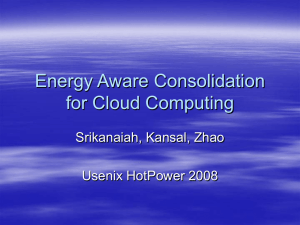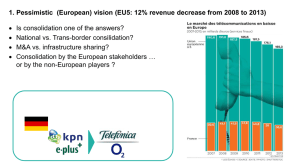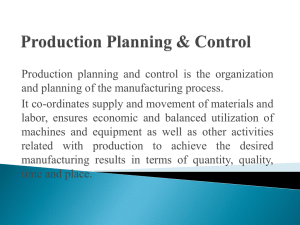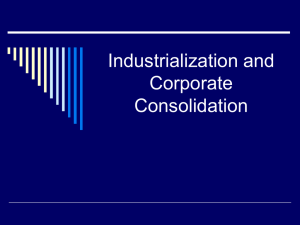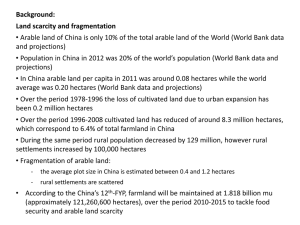Presentation (PDF)
advertisement
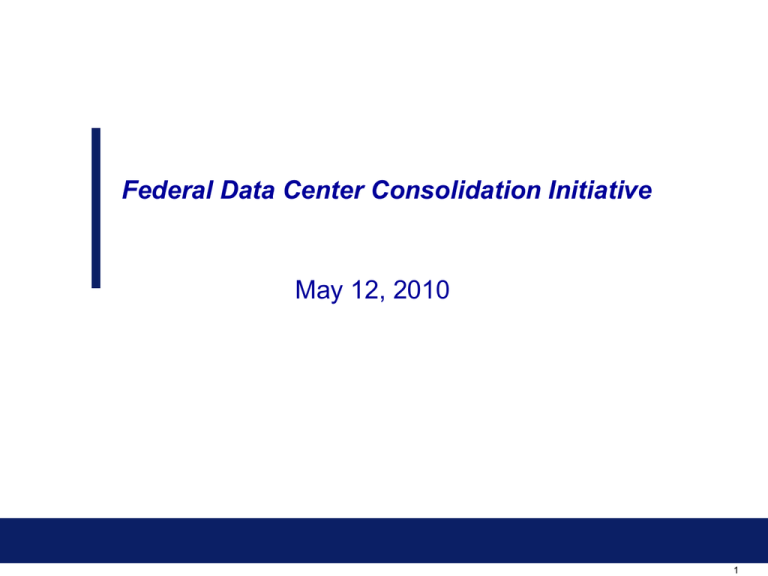
Federal Data Center Consolidation Initiative May 12, 2010 1 FDCCI Business Drivers The reported number of Federal data centers grew from 432 in 1998 to more than 1,100 data centers in 2009[1]. This growth in redundant infrastructure investments is costly, inefficient, unsustainable and has a significant impact on energy consumption. In 2006, Federal servers and data centers consumed over 6 billion kWh of electricity and without a fundamental shift in how we deploy technology it could exceed 12 billion kWh by 2011[2]. In addition to the energy impact, information collected from agencies in 2009[1] shows relatively low utilization rates of current infrastructure and limited reuse of data centers within or across agencies. The cost of operating a single data center is significant, from hardware and software costs to real estate and cooling costs. [1] Current Data Center count is based on OMB Budget Data Request (BDR) No. 09-41, August 8, 2009 [2] Report to Congress on Server and Data Center Energy Efficiency, Public Law 109-431, U.S. EPA ENERGY STAR Program, August 2, 2007 2 FDCCI Strategic Goals & Primary Benefits The Federal Data Center Consolidation Initiative aims to address these challenges by leveraging best practices in the public and private sector, and focusing to: 1. Promote the use of Green IT by reducing the overall energy and real estate footprint of government data centers; 2. Reduce the cost of data center hardware, software and operations; 3. Increase the overall IT security posture of the government; and 4. Shift IT investments to more efficient computing platforms and technologies. Primary Benefits: The primary benefit from improved IT equipment utilization is reduced overall energy consumption which leads to significant energy cost savings (up to 90% for virtualized IT equipment) Additional benefits from Virtualization & Data Center Consolidation • • • Reduced Facilities Maintenance & Operations costs Reduced Server Maintenance & Operations costs Improved Automation for Server Management & Provisioning 3 Data Center Consolidation – Utilization Improvement Metrics Improving IT asset utilization is the key driver for reducing energy consumption per unit of performance. This can be achieved primarily by: – Server Virtualization (increasing the number of virtual servers per hosts) – Server Consolidation (decommissioning underutilized physical servers) – Rack Space Consolidation (relocating underutilized racks) – Data Center Consolidation (shutting down underutilized facilities) Utilization Metrics Typical Results Target Results Average Virtualization (%) 0-10% 30-40% Average Virtual OS per Host (#) 5-10 15-20 Average Server Utilization (%) 7 – 15% 60 – 70% (application dependent) Average Rack Space Utilization (%) 50 – 60 % 80 – 90% Average Power Density Usage Equivalent (W/sq.ft.) 50 – 100 W/Sq Ft 150 – 250 W/Sq Ft Power Usage Efficiency (PUE) 3–2 1.6 – 1.3 4 High-Level Summary of Consolidation Approaches Approach Decommission Centralization / Site Consolidation Description Potential Benefits Rationale Turn off servers that are not being used or used infrequently (e.g. dedicated development environments) • Cost Savings • Energy Efficiency • Frees Floor / Rack Space • As many as 10-15% of servers may be inactive but still powered on in data centers* Move servers/storage to a few selected data centers • • • • Floor Space Cost Savings Operational Cost Savings Increase Rack Utilization Energy Efficiency • Approximately 430 Government data centers are categorized as “closets” or small sized data centers (less than 1,000)** • Server Utilization is approximately 21% Government wide** Consolidate small data centers to larger target centers Virtualization Consolidate several servers onto a single server through virtualization of the OS/Platform • • • • Floor Space Cost Savings Increase Rack Utilization Increase Server Utilization Energy Efficiency Cloud Computing Alternatives Move application functions to standard, vendor supported enterprise platforms or services • • • • • • Floor Space Cost Savings • Reduce Operational Risk, lower Energy Efficiency TCO and TCSD Operational Cost Savings • Approximately 40% of Civilian Cap Ex Cost Savings HW/SW Agency Systems are low-impact Reduced SW Maintenance FISMA security, and therefore may Improved Service Delivery be low-risk candidates for Cloud Computing solutions * McKinsey Report: Revolutionizing Data Center Efficiency, July 2008 ** OMB BDR 09-41 Data Analysis, October, 2009 5 Data Center Consolidation – Agency Reporting Schedule Deliverables 1. INITIAL ASSET INVENTORY Description Conduct an initial inventory of data center assets. This will provide a highlevel understanding of the scale and size of data centers, IT infrastructure assets, and supported applications. Agency Deadlines April 30, 2010 Develop an initial data center consolidation plan. This plan will identify 2. INITIAL DATA CENTER potential areas for consolidation, areas where optimization through server CONSOLIDATION PLAN virtualization or cloud computing alternatives may be used, and a high-level transitioning roadmap. June 30, 2010 Collect the final asset inventory baseline containing more detailed data. 3. FINAL ASSET This will serve as the foundation for developing the final data center INVENTORY BASELINE consolidation plans. July 30, 2010 4. FINAL DATA CENTER CONSOLIDATION PLANS Develop final data center consolidation plans. The final plans will include a technical roadmap and approach for achieving the targets for infrastructure utilization, rack density and consolidation. Aug. 30, 2010 5. ONGOING MONITORING Conduct ongoing annual monitoring and reporting staring in FY11: •Update the asset inventory annually (end FYQ3) •Report progress on executing data center consolidation plans (end FYQ4) •Reflect changes in asset inventories and account for execution of data center consolidation plans in subsequent year’s budget June 30, 2011 Sept. 30, 2011 6 Strategic Goals and Opportunities Strategic Goals Tactical Opportunities Software Assets Hardware Assets Facilities & Energy Location & Real Estate Identify/Classify Business Application Services Reduce the Cost of IT Lower Leasing Costs per Sq Foot Move Applications / Infrastructure to Cloud Perform Virtualization of Servers / Storage Consolidate Small Data Centers Optimize Large Data Centers Promote the Use of Green IT Utilize Alternative “Green” Energy Sources Optimize Cooling Methods / Performance Power Supply Improvements Increase Security Posture Invest in Efficient Platforms & Technologies Improve Security via HW & SW Asset and Configuration Management Improve Performance via Redundancy, Load Balancing, COOP Aggregate Administrative Functions Disseminate Government Best Practices Facilitate Cross-Government Collaboration Create Metrics for Measuring Goals 7 Primary Focus Areas, Consolidation Approaches and Constraints/Considerations FOCUS AREAS Data Center Asset Key Metric Servers & Mainframes Storage (physical & network) • Average Server Utilization (%) • Average Storage Utilization (%) CONSOLIDATION APPROACHES CONSTRAINTS / CONSIDERATIONS Decommissioning Facilities Lease & Term Agreements Centralization / Site Consolidation App Requirements (Performance, Security, COOP/DR, Integration) • Average Rack Utilization (%) Virtualization Data Center Floor Space • Total IT Floor Space (sq ft) Cloud Computing Alternatives IT Energy Efficiency • Energy Efficiency (PUE and kW) Racks OS / Platform & Standardization Tier Classification, Square Footage Available Geographic Location (Cost/sq ft, Geo-diversity, Energy Costs) Personnel Relocation, Costs & Risks 8
